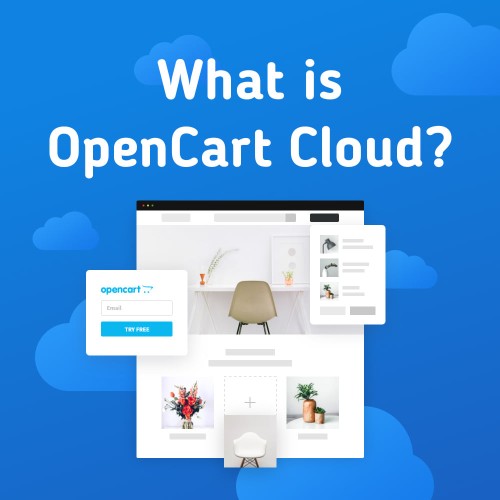The world of ecommerce is fairly competitive and that means there are tons of sites that want to outrank you for your keywords.
You need supercharged growth strategies to beat them at their game.
Optimize Your Website
For growing your ecommerce business let’s begin with the basics. Everything else you may see or read is pointless without a site optimized for conversions.
Begin a new business by running an evaluation of this important checklist of items.
Design. When it comes to optimizing your website, begin working with third parties to ensure the design is great as well as customer-friendly. If you are a content creator, consider starting an ecommerce shop on platforms like Patreon that lets fans send you $5 in donations. The platform also allows fans to access different products.
SEO. If your site isn’t ranking on Google. No one will discover the site. Enhance the site’s visibility through link building. Consider adding strategies from experts to boost your website's search engine rankings and increase organic traffic.
Chatbot. Add a chatbot to your site to interact with and generate revenue with live customers and provide great customer service.
Appointment/Meeting Scheduling. If customers want to know more offer a way to set appointments with something like Calendy.
2. Create Plenty of New Content
It’s not an easy feat for most ecommerce sites to stand out. Creating 500 to 1000-word articles is challenging for ecommerce sites to stand out. Writing 500 to 100-word posts almost every other day is challenging. There’s also a need for videos, audio, and advertising to generate traction. Utilizing design templates for content creation, including guest articles, blogs, and multimedia, can streamline the process and maintain a consistent brand identity.
To create better content, businesses need to start by identifying what their customers are looking for and create content that goes inside that narrative and drives them through a well-tailored marketing funnel that ends with a successful client onboarding. Yates Jarvis (Linkedin) a leading marketing consultant for E-commerce, emphasises the importance of strategic content planning by stating, " When planning your content out, you need to balance quality with volume. Higher frequency in content posting will allow you to have a more robust repurposing strategy through email and social channels. To achieve this, create a balanced plan whereby you mix high, medium, and low effort content to create a sustainable schedule you can rely on." Building a comprehensive business plan can help you forecast and clear challenges and opportunities. Just be prepared in the marketplace.
Survey your customer base.
If you want to find out what customers want from your content. Ask. Create a survey form template and send that to your customers and get to understand their preferences. You should train employees to make this possible.
Look at your competitors.
It can also do good to survey the competition. Surveying isn’t the same as copying. However, you can use these tools to find inspiration.
Brainstorm from your own experience.
Nobody expects you to know your product better than you. Brainstorm what you think customers need to know about your product and then create new content based on these ideas. Multiple online services can help you create content too.
3. Strengthen Your Social Media Strategy
Ecommerce companies tend to use social media channels that don’t lead them to sales sites or have anything sales-related on social media pages. “Develop tactics like live streaming and chatbots to send people to your store. Use PPC and paid channels to convert ready-to-buy customers,” says Keran Smith, Co-Founder and CMO at LYFE Marketing. You can then use social media analytics to track engagement rate per post to see which posts are bringing you traffic and conversions.
4. Filter and Update Your Email Marketing List
Emails are an old-format marketing strategy. Ecommerce sites should be smart about how they use email marketing though. It’s not effective to blast thousands of emails when only a few hundred are interested. Send a short questionnaire to your list. Ask them about products they want to see and information they want in the next year. You can always use a few business process automation tools to automate your email marketing campaigns.
With email marketing offer your new subscribers, welcome email to:
Introduce your brand
Show subscribers what to expect from the email series
Guide your subscribers to the next step
Provide potential customers with resources to help them with informed buying decisions
According to studies, welcome emails have an open rate that’s 86% higher than other types of emails and are credited with 320% more revenue compared to promotional emails.
This is enough reason for you to send subscriber welcome emails when someone signs up for the list.
Here’s another example of a welcome email to new subscribers by Virgin America:
For beauty, fashion, and visual niches this format will work well.
When should you send new subscriber welcome emails?
Your welcome series should go immediately after someone signs up. New subscriber welcome emails generate more opens and clicks than promotional emails sent later in the customer lifecycle.
It’s a great way to see active addresses and get data for your marketing campaigns.
5. Offer Items You Didn’t Offer in the Past
If your shop decided to offer fewer items in the past, now is the time to add more products and create a boom for your products, Customers started buying new products they never bought before from online stores. You can make use of this trend by offering novel products.
If your shop is waiting for the pandemic to pass, then you’re dead in the water. It changed the way consumers that people are leaving brick-and-mortar in droves.
6. Augmented Reality Experiences
Let’s take a bigger leap of faith into the future. A top trend for ecommerce in 2024 will be augmented reality where shopping experiences mimic real-life experiences.
Don’t worry! That doesn’t mean people will need a virtual reality headset to shop in your store. It means that people should be able to see how your products will look in their homes or real life.
In that way something like 3d modeling is more important in that respect, 3D modeling is becoming a powerful e-commerce tool.
Another trend to jump on is live-streaming shopping events that mirror what QVC does on its television channel. It’s an opportunity to take customers to your factory, connect them with experts, break down your products, and show them how to use them.
Sephora nails with the help of their AR-assisted virtual artists. The store and app have customers use their smartphone to try different foundation shades and lipstick colors before they buy it.
YSL Beauty is another good example. Customers can use the store or app to try different lipstick and lip gloss colors through live or uploaded images.
7. Make Your Store Mobile Friendly
Mobile e-commerce is growing at a rapid rate, and analysts expect the rate to increase by another 22.3 percent in 2023.
Since customers are buying more from their phones, it’s essential for e-commerce businesses to make sure their store is mobile-friendly. Be sure to check your site’s mobile-friendliness with Google’s Mobile-Friendly Test.
Another good practice would be to create QR codes for your mobile app and display them on your website, email communication, and content. This would make it super easy for customers to switch from a PC to a more preferred mobile device.
It’s also helpful to build a progressive web application (PWA) for your store. They load much faster than a standard website and allow customers to see what they’ve browsed offline.
Accelerated mobile pages are another option for your store to create better shopping experiences.
8. Build a Niche Brand
Brand building is one of the most important aspects of any business. But in 2023, building a brand in the e-commerce world is life or death.
The top consumer trend regarding brand niche has leaned towards social consciousness with green and local brands coming out on top. It’s great for those businesses because customers will pay more for brands they see have a vision, drive, or purpose.
UpFlip for instance has interviewed Tim and Grace Lukens from Grace Harbor Farms, who built their brand from the ground up using green principles. They generated loyalty using local goods and green groceries and now have more than $120k per month in revenue.
The beauty niche market
The beauty niche market keeps evolving, expanding, and propagating with cruelty-free and chemical-free beauty products. Since the pandemic happened consumers are now more health conscious than before.
Nothing is more appealing than natural beauty products.
The entire worth of the natural cosmetic industry is thought to be $33.4 billion back in 2020. Now, it is worth more than $56 billion in 2030. New brands are selling vegan cosmetics and leaving an unforgettable mark in the industry.
Vegan bases like tea extracts, rice, and vitamin C are now more popular.
Creating natural products is easy. You can find FDA regulations for the same understand production requirements and then safely start marketing those.
B. Menswear And Grooming Products
There’s a niche market for everything including men’s beard. The searches for beard oil have gradually progressed only upward, in the last five years. It’s a great example of a niche category that hasn’t been touched by mainstream brands.
In much the same stream, women’s grooming products have been mushrooming. Men’s grooming now has moisturizers, post-shave mist, face masks, and more.
The niche will reach around $110 billion by 2030.
C. Subscription Models
Another big trend in eCOmmerce is subscription-based eCommerce. Subscription businesses take convenience as a core tenet.
That’s the reason why businesses in any niche can create a subscription program.
This follows the principle of customer satisfaction.
Sakura is a Japanese subscription box company that sells authentic and funky Japanese-styled snacks and sweets.
Swanson Vitamins or Birchbox sends beauty product samples to women between the ages of 25 to 39.
Subscription businesses will generate $ 904.2 billion in revenue by 2026. They curate products and services according to the target market preferences and are responsible for a lucrative market. On-demand subscriptions are a sub-niche of the category and are very active in digital assets like video streaming.
9. Enhanced Fulfillment through 3PL
The pandemic made people forget about in-store shopping. But home deliveries are only sometimes great for small businesses. However, you can always rely on third-party logistics like 3 PL to streamline fulfillment. They are equipped to handle full-service end-to-end solutions.
10. Make use of Social Media Marketing
Social media can be effective when creating brand awareness, great customer service, and generating business leads. Facebook, Instagram Pinterest, and YouTube are all favorites to reach out to niche audiences and drive traffic to the site.
In a big market winning on social media isn’t easy. As an ecommerce brand, you need social media analytics to create tailored campaigns that generate engagement but also fill your sales funnel fast. So you need to know if your videos, images, or other posts are performing and decide based on that alone.
Ecommerce brands should also leverage social selling to grow prominently. The post below from Macy’s allows customers to buy what they like on the page.
Image via Facebook
If you invest in this strategically, selling on social media acts profitably for your business.
11. Leverage Ecommerce Tools
Your team doesn’t have to struggle with sales to ensure success. Different advanced ecommerce tools can help you optimize those efforts.
Some must-use tools are
Website tools – this allows you to design, set up, and manage your site. For example, OpenCart cloud is a great platform to create and manage an ecommerce store.
Ecommerce marketing tools – this helps you strategize and execute your campaigns.
Competitor analysis tools – help you get a bird’s eye view of your gaps in planning and ways to improve on them. A good example of such a tool is Semrush and Ahrefs.
Sales automation tool - ensuring your ecommerce business is equipped for sustained success
Analytics tools – help you gauge the performance of your digital campaigns, say Google Analytics.
Business tools – allows you to manage daily operations, inventory and customer service and customer service (e.g., a small business CRM)
Choose the ones that can boost the success of your ecommerce business.
Final Thoughts
This gives you an entire ready list of factors that help you be successful with your ecommerce business. Getting this success is hard work but is also doable.
If you want to strongly fuel business growth in no time, build your ecommerce strategy that enhances customer experience while also building your brand identity.




Login and write down your comment.
Login my OpenCart Account